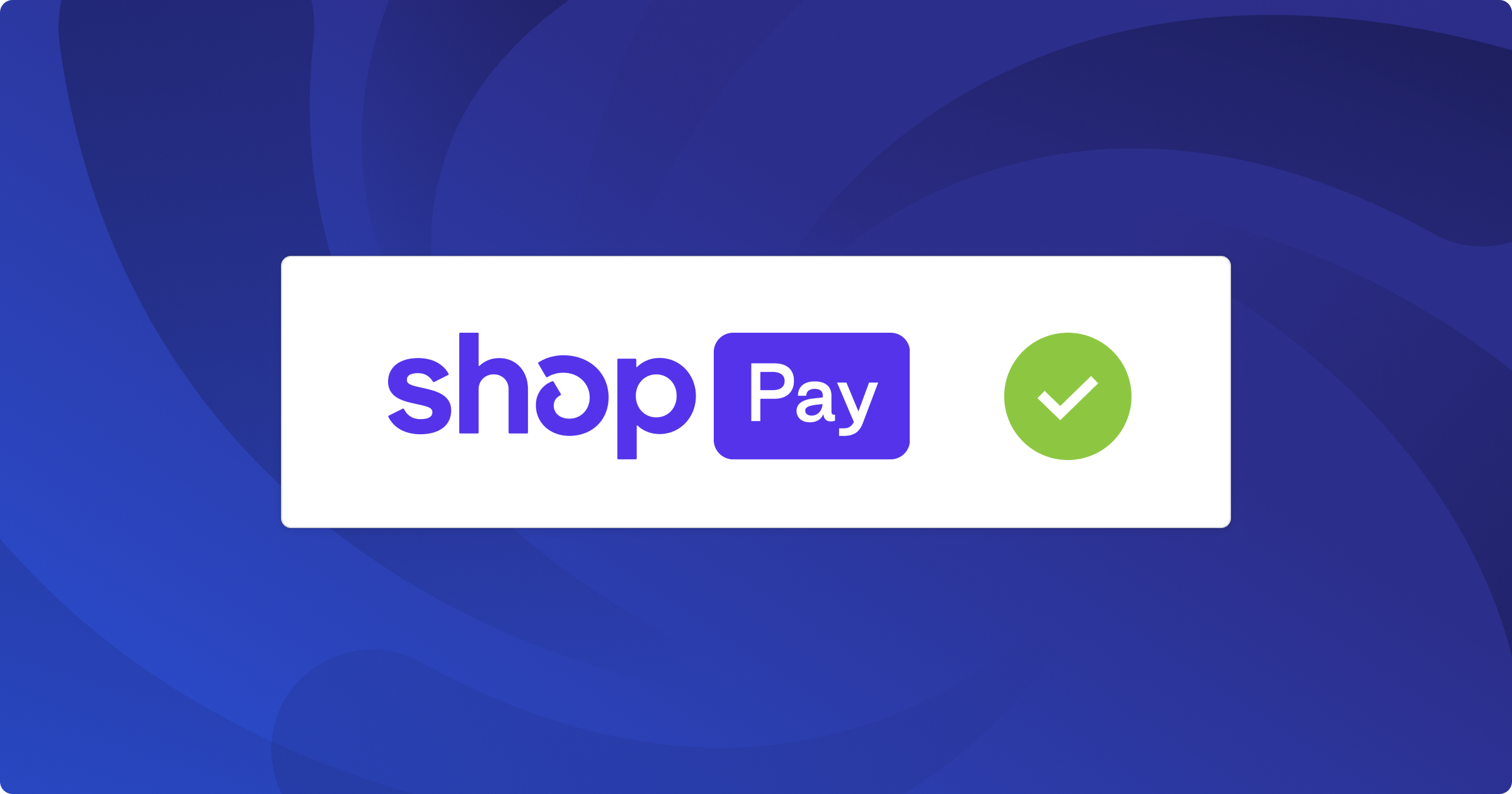How to Reconcile Shop Pay Payouts
Written by: Elspeth Cordray

If you provide bookkeeping services to Shopify merchants, you’ll inevitably run into Shop Pay – Shopify’s accelerated-checkout and payment gateway that lets buyers breeze through any Shopify store (or the Shop app) with the card and shipping details already stored in their profile.
This guide unpacks what makes Shop Pay – and its offshoot, Shop Pay Installments – distinct, highlights the quirks you must capture in the ledger (separate installment payouts, fees, and marketplace-facilitator sales-tax lines), and walks you through a month-end workflow to reconcile every Shop Pay deposit in QuickBooks Online (QBO) right down to the last cent.
The information in this guide comes from the Financly Ecommerce Training Academy, a private community where accountants and bookkeepers master payment gateway reconciliations, inventory accounting, and the many complexities of ecommerce finance.
Watch: Reconcile Shop Pay in QuickBooks Online
In this video, Teresa Slack, CEO and Co-Founder of Financly, walks through how to reconcile Amazon Pay in QBO for accountants and bookkeepers.
What is Shop Pay?
Shop Pay is Shopify’s accelerated-checkout option that lets buyers store their shipping and payment information once and reuse it across any Shopify store. When a customer chooses Shop Pay at checkout, the app auto-fills their address and card details, so the sale can be completed with a single tap.
What is the Shop App?
Think of the Shop app as Shopify’s all-in-one marketplace and order-tracking hub: shoppers can wander a mobile “mall” of countless Shopify-powered stores – much like browsing Amazon or Etsy – then breeze through a one-tap checkout because their payment and shipping details are already saved.
After the sale, the app automatically tracks every shipment and rewards users with Shop Cash that can be applied to future purchases.
For U.S. customers, a built-in partnership with Affirm lets them divide the cost of orders into installment payments.
What Accountants and Bookkeepers Need to Know About Shop Pay
- Separate payment method – Shop Pay transactions are part of the Shopify Payments payout stream, but appear as their own line items in A2X.
- No direct QBO feed – Data must flow via an integration (e.g., A2X) or be recorded manually.
- Multi-currency friendly – The app handles FX conversions cleanly; exchange-rate variances can still arise between Shopify and QBO.
- Manual fee capture for installments – Fees on U.S. Shop Pay Installments are not included in A2X’s journal entries and must be recorded separately.
The Shop App & Marketplace Facilitator Tax
As of January 1, 2025 the Shop app is officially a “marketplace facilitator.” For every order placed through the app (not the merchant’s online store), Shopify calculates, collects, and remits sales tax to the appropriate jurisdiction – much like Amazon does.
Reconciliation implications
- Two kinds of tax lines show up in Shopify reports
- Online Store – Not Filed → Tax was paid out to the merchant and must be remitted by the merchant.
- Shop App – Filed → Tax has already been remitted by Shopify.
- In A2X mapping
- New lines carry a numeric code (e.g., 3890849) signifying Shop-app activity.
- Map product/discount/refund lines the same way you map normal Shopify sales.
- Decide whether to:
- Map marketplace-tax items straight to Shopify Fees (fast, fewer accounts), or
- Post them to a dedicated Shop App Sales Tax Collected liability and clear it monthly with a journal that debits that liability and credits Shopify Fees (cleaner audit trail).
Shop Pay Installments
Think of Shop Pay Installments as a bolt-on financing lane within the standard Shop Pay gateway:
- Availability: At present, only U.S. merchants can offer it, but Affirm and Shopify have announced a Canadian rollout is on the horizon.
- Processor: Affirm underwrites the credit, settles the full purchase amount with the merchant, and withholds its processing fee.
- Payout flow: Installment payouts hit the merchant’s bank account separately from regular Shopify Payments deposits, making them easy to spot in the feed.
- A2X handling: A2X generates a distinct “Shop Pay Installments” journal entry. Note that Affirm’s fees are not included, so you’ll post those manually to the clearing account.
Best practice for the books:
- Create a Shopify Installment Clearing account.
- Map the A2X installment entry to that clearing.
- Record a manual expense entry for Affirm’s fee, reducing the clearing balance.
- Use a bank rule transfer from the clearing to the live bank account to match each net payout.
Follow that four-step loop each month and your installment clearing account should reconcile back to zero, giving you clean, audit-ready financials.
Step-by-Step: How to Reconcile Shop Pay
- Send entries from A2X to QBO
- Choose daily/weekly/monthly summaries.
- You’ll receive separate entries for:
- Shopify Payments
- Shop App (a.k.a. Shop Cash)
- Shop Pay Installments (if enabled).
- Match deposits in the QBO bank feed
- Regular Shopify Payments and Shop App deposits should match their journal entries $-for-$ – no clearing account needed.
- For Installments, deposits hit the Installment Clearing account first; set up bank rules to transfer them to the main bank and zero the clearing.
- Record installment-fee expense (if applicable)
- Export the “Shop Pay Installments – Processed payments” CSV from Shopify (Finances → Payouts → More Filters).
- Sum the fees, then Debit : Installment-Fee Expense and Credit : Installment Clearing.
- Handle marketplace facilitator tax (Shop App orders)
- Run Analytics → Reports → Finance Summary → Taxes.
Filter for “Filed” + “Shop” lines, total the tax.
Either:- Post a journal to move those amounts from Shop App Tax Collected to Shopify Fees, or
- Accept A2X’s default (all in Shopify Fees) if you prefer speed over granularity.
- Run Analytics → Reports → Finance Summary → Taxes.
- Month-end sales check
- Export the Shopify Finance Summary for the period.
- Run a P&L in QBO for the same dates.
- Compare product sales, discounts, shipping, and fees. Any variance usually points to FX or mapping issues.
Frequency: Reconcile Shop Pay monthly, the same cadence as your bank and credit-card accounts; catching small discrepancies every 30 days prevents year-end headaches.
By treating Shop Pay like a distinct gateway (especially for Installments) and staying alert to the Marketplace Facilitator Tax split, you’ll keep client books clean, compliant, and ready for decision-making. Follow the workflow above, document each mapping choice, and you’ll sail through month-end with plenty of “match match match” satisfaction.
Troubleshooting Shop Pay Reconciliation
You might run into these errors when reconciling Shop Pay.
Potential error: Deposit ≠ A2X journal
Likely cause: Missing installment fees or mapping entry routed to clearing, not bank.
Fix: Add fee journal; confirm A2X mapping.
Potential error: Marketplace tax lines unbalanced
Likely cause: Tax recorded as a fee but liability acct still holds balance.
Fix: Post clearing journal (debit tax liability, credit fees).
Potential error: Multi-currency variances
Likely cause: Shopify and QBO used different exchange rates.
Fix: Compare order-level FX in Shopify vs. rate in A2X entry; adjust using a re-valuation journal if material.
Potential error: Shop App orders missing
Likely cause: Filter mismatch in Shopify report or delayed payout.
Fix: In Shopify Orders, filter by Channel = Shop and confirm fulfillment status.
Potential error: Clearing account never hits zero
Likely cause: Transfer rules or fee journals missing.
Fix: Re-run the installment CSV, verify all payouts & fees posted, adjust opening balance if needed.
Master Shopify Bookkeeping
Join the Financly Ecommerce Training Academy for deep-dive tutorials, live Q&A sessions, and a peer community focused on overcoming the challenges of ecommerce accounting.
Use code NEW20 for 20% off your membership!

Become an A2X Partner
Join the A2X Partner Program to build your expertise, grow your client base, find community, and earn discounts.
Join now
